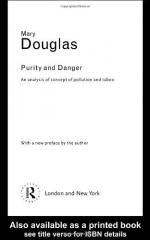|
This section contains 470 words (approx. 2 pages at 400 words per page) |

|
Chapter 6 Summary and Analysis
Douglas purports that pollution only involves situations with clearly defined structures, both cosmic and social. Pollution annihilates restrictions and disorder remains unlimited, as there is no pattern that can be enforced. Creating order involves acknowledging disorder, and such disorder is both powerful and dangerous. Through rituals, affective powers can be recognized as disordered patterns can be reached better through unconscious. Only abandoning the rational can provide energy to control powers and truths. Therefore, some tribes send mad people into the bush to destroy the apparent sorcerer's work. Also, people at the margins of society represent danger both to society and to themselves. Other examples of formlessness and dangers involve unborn babies of pregnant women as part of beliefs of some tribes. For the Maoris, menstrual blood represents a symbol of life and a person who could be alive. Van Gennep, cited...
(read more from the Chapter 6 Summary)
|
This section contains 470 words (approx. 2 pages at 400 words per page) |

|




